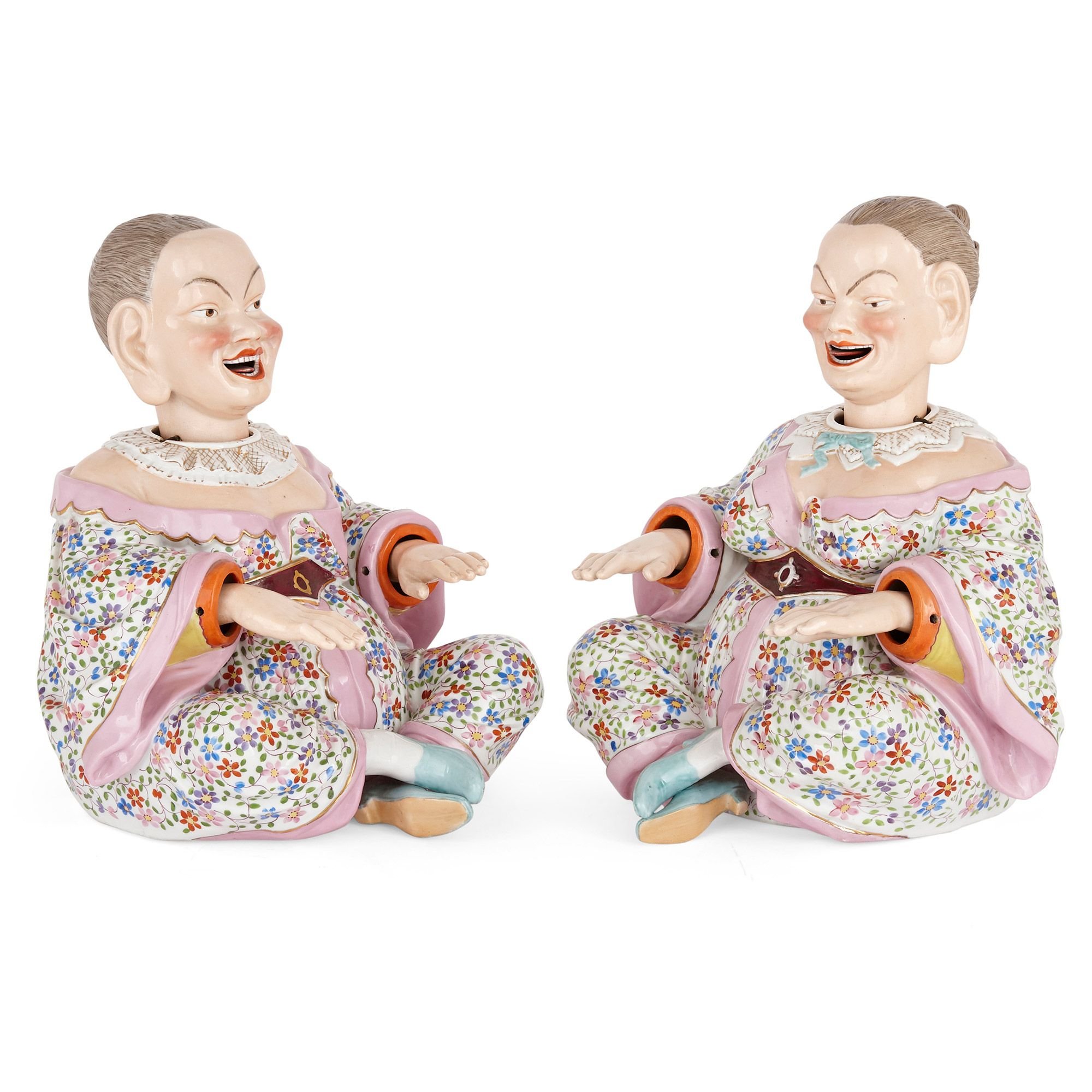These porcelain ‘pagoda’ figures—also known as ‘pagodes’ or ‘magots’—take the form of broadly grinning Chinese men, each of whom sits cross-legged, sporting a large belly and ears. They wear pointed and heeled jade coloured shoes and loosely draped traditional robes, the robes decorated with multitudes of colourful flowers above the white porcelain ground. The figures are articulated: their heads nod and their hands and tongues wag in a charming and delightful way.
‘Pagoda’ figures first became fashionable among European collectors in the 17th and 18th Centuries. The name ‘pagoda’ derives from the source of the prototypes of these types of figures: their seated form and bodily shape is based on sculptures found in pagoda temples in China and South East Asia. During the 17th and 18th Centuries, figures such as these were created in China for the purposes of export to Europe to satiate the new-found demand. Early European porcelain factories, especially Meissen, began the manufacture European versions in the 18th Century, and various other manufactories have produced versions since.
The present pair are by Ernst Bohne Söhne, a German porcelain producer founded in 1848. Each figure is signed with the underglaze symbol for the firm, as well as an impressed ‘EBS’ mark.











